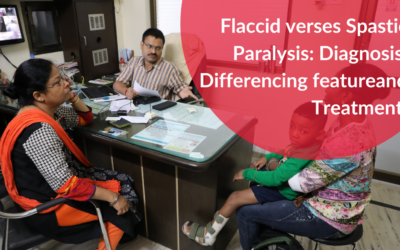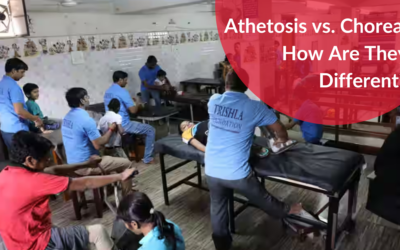Cerebral Palsy Symptoms
Releted Posts
Cerebral Palsy
Cerebral Palsy Types
Cerebral Palsy Myths
Cerebral Palsy Surgery In India
Cerebral Palsy Children
Cerebral Palsy Defination
Cerebral Palsy Care Plan
Cerebral Palsy Prognosis
Cerebral Palsy Symptoms
Cerebral Palsy Treatment
Cerebral Palsy Therapy
Cerebral Palsy Organizations
Cerebral Palsy Living Style
Cerebral Palsy Birth Injury
Cerebral Palsy Associated Disorder
Cerebral Palsy Eating Feeding Tips
Cerebral Palsy Sleeping Disorder
Diplegia Spastic Cerebral Palsy
Spastic Cerebral Palsy
Yoga & Physiotherapy
Donate Now
Your one donation can give someone a new life
Symptoms Of Cerebral Palsy
Symptoms of cerebral palsy in children are dribbling of saliva, problem in sucking, no social smile on looking to mother, abnormal sensation and tone in body of baby, a delayed milestone like absent neck holding, creeping crawling, knee walk, less use of hands, epilepsy presence of primitive reflexes, growth retardation, microcephaly, etc
Types Of Cerebral Palsy
A cerebral palsy is a group of neuromotor disorders. It occurs because of brain insult at the early age of life. It can present in a variety of manner like spastic cerebral palsy, athetoid cerebral palsy, ataxic cerebral palsy, mixed cerebral palsy, hypotonic, etc.
In spastic cerebral palsy tone in the body is high during all activities but in dyskinetic cerebral palsy tone is fluctuating and completely normal during rest and in sleep.
Ataxic cerebral palsy presents as a balance issue in cerebral palsy. Dystonic and ataxic cerebral palsy usually affects the whole body but spastic cerebral palsy presents as hemiplegic, diplegic, triplegic, and quadriplegic spastic cerebral palsy.
Treatment For Cerebral Palsy
According to the latest cerebral palsy definition (Modified after Bax et al. 2005), it is a group of permanent disorders of the development of movement and posture, causing activity limitation, that is attributed to non-progressive disturbances that occurred in the developing fetal or infant brain.
Primarily these children have problems in muscle tone, gross & fine motor activity, balance & posture. It is often accompanied by problems in sensation, perception, cognition, communication, behavior, speech & seizures. Mental retardation can be found in 30-40% of children with severe disabilities.
Cerebral palsy symptoms vary and depend upon the part of the brain involved, age of diagnosis, severity, and treatment received so far. Cerebral palsy can be diagnosed at a very early age even up to 6 months of age by recognition of delay in developmental milestones, abnormal muscle tone, absent neck holding, poor social smile, problem in sucking & deglutition, history of high-risk delivery, etc.
Afterward many cerebral palsy symptoms like difficulty in crawling, standing, walking, speech, vision, hearing, behavior problems, drooling, recurrent illness, nutrition problems, seizure, presence of abnormal movement in the body can present.
Severity can vary from trivial problem to severe disability even complete bedridden. The cerebral palsy problem can affect one part of the extremity to the whole body depending upon the extent of the brain lesion.
These children can also have different movement disorders depending upon the site of the brain lesion. Spastic children have spasticity & fix tone patterns. Dyskinetic cerebral paly has a variable tone pattern.
Check More About Cerebral Palsy its Causes, Symptoms & Treatment – Check Video
Important Facts About Cerebral Palsy
16 Cerebral Palsy Myths
Cerebral palsy Care Plan
Cerebral Palsy Prognosis
Cerebral Palsy Birth Injuries
Cerebral Palsy Sleeping Disorder
Living With Cerebral Palsy Disorder
Cerebral Palsy Associated Disorders
Cerebral Palsy Eating and Feeding Tips
It is good to have some knowledge of the cerebral palsy condition and also important to know about the symptoms of cerebral palsy. Knowing the cerebral palsy symptoms and signs can ensure immediate therapy for cerebral palsy children. There are some essential things that you need to aware about the symptoms of cerebral palsy. Your awareness about CP will help in proper cerebral palsy diagnosis.
- Symptoms of CP condition are not the same for each and every child. There are four major types of cerebral palsy. A child’s symptoms will define which type of cerebral palsy child have. Spastic cerebral palsy, ataxic, athetotic cerebral palsy and mixed cerebral palsy has. Spastic cerebral palsy is further categorized into different categories like spastic hemiplegia, spastic monoplegia, spastic diplegia, and spastic quadriplegia. These categories of cerebral palsy depending on the limbs affected.
- Some of the cerebral palsy cases have mixed symptoms of all three types. Cerebral palsy symptoms include stiffness in muscles, floppy in muscles, tremors, asymmetrical gait, foot-dragging, drooling, scissors gait, hearing problem, sight impairment and have difficulty in swallowing.
- Some children with the cerebral palsy condition may also suffer from mental retardation problems. This is not seen always in the CP case. In fact, many cerebral palsy children have mental abilities that are normal for their age.
- Cerebral palsy symptoms do not have a set frame time to appear on the child. Some of the case it may show first few days and weeks after birth. In milder conditions, it may appear after one or more years.
- It can make difficulties in movement. But different cerebral palsy therapy techniques and advanced medical procedures can help children get more potential with better improvement in movement. Most of the time these treatments are miracles for CP patients to become self-independent and enjoy life with more joy.
- Cerebral palsy therapy mostly inspired by physiotherapy treatment or special exercises. Some of therapies patient can perform it easily on their home.
Watch Our Success Stories
Cerebral palsy is a lifelong condition that affects individuals from infancy, presenting multiple challenges. As a parent & specialist, it's essential to have comprehensive information to navigate this journey.
Subscribe to our YouTube channel to access: Educational videos, Real-life case reports, Inspiring success stories
Stay informed, stay empowered!
Page Medically Reviewed and Edited by
DR. Jitendra Kumar Jain
Dr. Jitendra Kumar Jain is a renowned name in the field of childhood physical disability & orthopedics problems in North India. He has been an MS Orthopedics, DNB Orthopedics, Pediatric orthopedic surgeon & cerebral palsy specialist for over 21 years.


Page Medically Reviewed and Edited by DR. JITENDRA KUMAR JAIN
Dr. Jitendra Kumar Jain is a renowned name in the field of childhood physical disability & orthopedics problems in North India. He has been an MS Orthopedics, DNB Orthopedics, Pediatric orthopedic surgeon & cerebral palsy specialist for over 21 years.
Testimonials
1. What is the main causes of cerebral palsy?
Cerebral palsy is caused due to the improper development or insult of the brain of the child before birth, during birth, or soon after birth. Cerebral palsy is also caused when the baby’s brain is not developed in the right way while it growing in the womb.
2. Does cerebral palsy affect a person’s intelligence quotient (IQ)?
Intellectual disability is not directly related to cerebral palsy but it may affect intelligence due to associative conditions.
3. What part of the brain does cerebral palsy effect?
The part of the brain that controls movement gets damaged in cerebral palsy is also called the cerebral cortex or motor area of the brain. Other areas of the brain can also be affected simultaneously.
4. What is a mild form of cerebral palsy?
Mild Cerebral Palsy means a child can walk without any help or support; his or her daily activities are not limited. Moderate CP means a child will need support, medications, and adaptive technology to fulfill daily activities.
5. How soon can you tell if a baby has cerebral palsy?
Cerebral Palsy is diagnosed during the 1st or 2nd year after birth. If your child’s symptoms are mild, it is sometimes tough to make a diagnosis until the baby is a few years older.
Reference Sources:
- https://cerebralpalsy.org.au/our-research/about-cerebral-palsy/what-is-cerebral-palsy/signs-and-symptoms-of-cp/
- https://www.cerebralpalsyguide.com/cerebral-palsy/symptoms/
- https://www.cerebralpalsy.org/about-cerebral-palsy/sign-and-symptoms
- https://www.cerebralpalsyguidance.com/cerebral-palsy/symptoms/
Make a Difference
Support Trishla Foundation's Life-Changing Work for Children with Cerebral Palsy!
Together, we can break barriers and empower children with cerebral palsy. With your generous contribution, Trishla Foundation can continue its vital work in providing therapies, education, and support to these incredible children. Help us create a brighter future by donating today!



